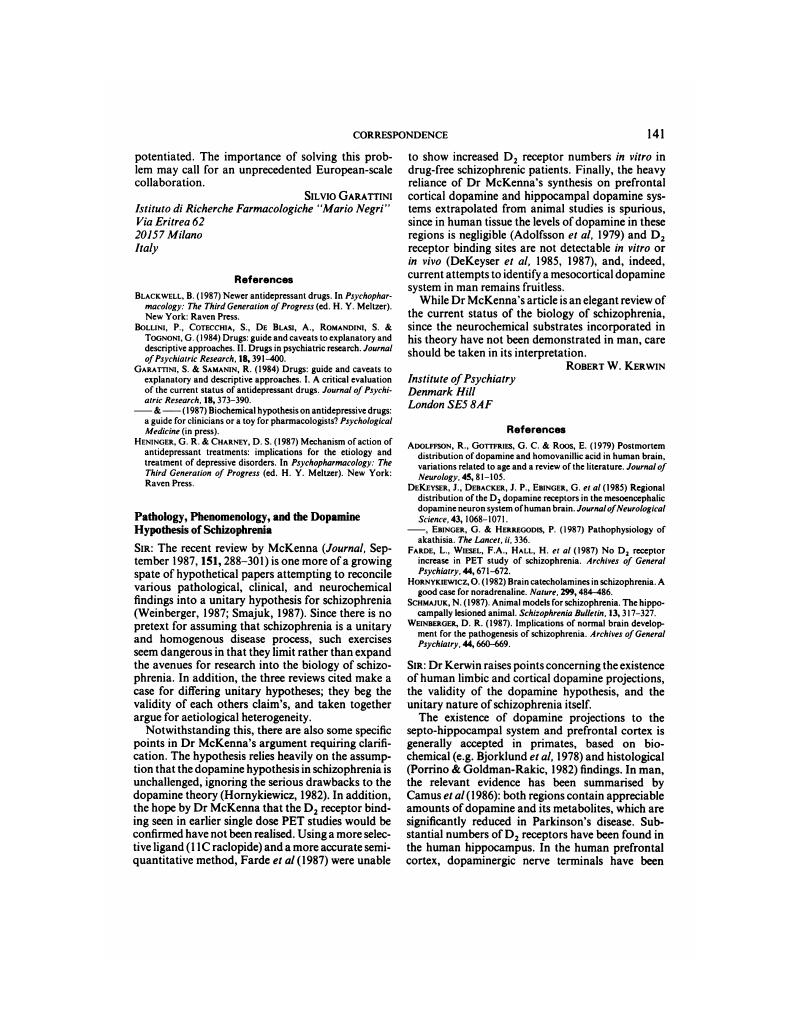Crossref Citations
This article has been cited by the following publications. This list is generated based on data provided by Crossref.
Kerwin, Robert W.
1989.
How do the neuropathological changes of schizophrenia relate to pre-existing neurotransmitter and aetiological hypotheses?.
Psychological Medicine,
Vol. 19,
Issue. 3,
p.
563.
Kerwin, R.
Patel, S.
and
Meldrum, B.
1990.
Quantitative autoradiographic analysis of glutamate binding sites in the hippocampal formation in normal and schizophrenic brain post mortem.
Neuroscience,
Vol. 39,
Issue. 1,
p.
25.
Kerwin, Robert
1992.
Merck, Sharp & Dohme Prize for Young Psychopharmacologists.
Journal of Psychopharmacology,
Vol. 6,
Issue. 2,
p.
230.
McDermott, Emma
and
de Silva, Prasanna
2005.
Impaired neuronal glucose uptake in pathogenesis of schizophrenia – Can GLUT 1 and GLUT 3 deficits explain imaging, post-mortem and pharmacological findings?.
Medical Hypotheses,
Vol. 65,
Issue. 6,
p.
1076.






eLetters
No eLetters have been published for this article.